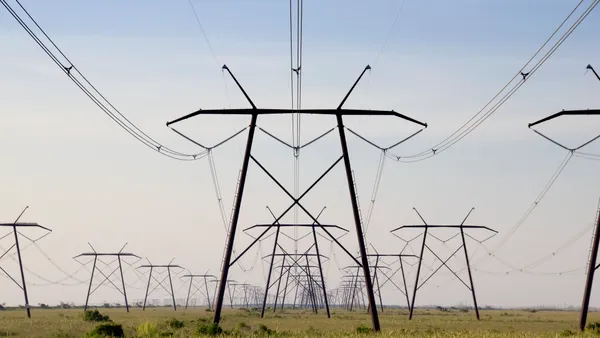Dive Brief:
-
Adopting a $10 per ton price on carbon could affect the manufacturing sector in states that are part of the Regional Greenhouse Gas Initiative (RGGI), a new report has found — particularly for high-energy industries like cement and aluminum.
- At that level, carbon pricing could reduce manufacturing employment by 2.7% in RGGI states, according to the National Bureau of Economic Research paper. Energy-intensive industries, meanwhile, could witness declines in average employment and output of 7.1% and 10.5%, respectively.
-
States can take multiple steps to mitigate these impacts — from subsidizing output to investing in energy efficiency and even carbon capture, according to experts.
Dive Insight:
As more states consider pricing carbon emissions from power generation and transportation, concerns are growing over potential impacts on the competitiveness of the manufacturing sector as well as the possibility of "leakage" — a scenario in which a given state's carbon pricing shifts industrial activity to other states, leading to a corresponding increase in that other state's emissions.
"There's a prevailing notion that carbon pricing may affect the competitiveness of facilities within a state, but the question is just how much?" Joshua Linn, senior fellow at Resources for the Future and co-author of the paper, told Utility Dive.
The report tries to answer that question by looking specifically at states that were part of RGGI, a cap-and-trade program that comprised of nine states during the study period: Connecticut, Delaware, Maine, Maryland, Massachusetts, New Hampshire, New York, Rhode Island, and Vermont. New Jersey was a founding member of RGGI before withdrawing under the leadership of former Gov. Chris Christie in May 2011, but has rejoined the program as of Jan. 1, under Gov. Phil Murphy.
RGGI carbon prices have been around $2 per ton, according to the paper. If they were increased to $10, however, manufacturing sector employment in participating states could drop by 2.7% on average, and conversely, employment, output and profits of manufacturing in neighboring states would increase by 0.8% — "suggesting a substantial shift of economic activity outside of RGGI."
The authors of the paper selected a $10 per ton price scenario since it could reflect actual prices in the near future, according to Linn.
Industries that are highly dependent on energy, like aluminum, chemicals and cement, will see more drastic reductions in output and employment. But despite state-level impacts, carbon pricing programs are unlikely to cause national losses because of a spillover effect, where the employment and output lost by one state is picked up by nearby regions.
"We don't see much of [an] overall national impact from this," according to Wayne Gray, professor of economics at Clark University and co-author of the report.
State regulators can take steps to mitigate the financial impacts of carbon pricing. California, for instance, has adopted a system in which a facility can get more free credits the more it produces.
"The set up has a way of effectively subsidizing output … the more you produce, the more of these free allowances you get," Linn said.
A particular area of interest for states is understanding how they can recycle revenue from a carbon tax program to bolster high-energy industries that are particularly vulnerable to it — essentially, "take some of that revenue that's coming in from the program and provide subsidies or breaks to those certain industries that would face the steepest declines,” Brendan Casey, report co-author and economist at consulting firm ICF, told Utility Dive.
"In an ideal world, we would have a national or international system to deal with carbon and we wouldn't have these boundary issues where you're facing a price on carbon in one state and no price in a neighboring state," Stacy Tellinghuisen, senior climate policy analyst with the Western Resource Advocates, told Utility Dive. But until that becomes a reality, states are testing and modeling different solutions to the problem, she added.
Last year, for example, Colorado passed legislation outlining a target of 50% emissions reduction from 2005 levels by 2030. As part of the legislation, if the Colorado Air Quality Control Commission were to determine that a facility in an "energy-intensive, trade-exposed" industry — like iron, aluminum, cement or paper — is using the best available emission control technologies and energy efficiency measures, it could drastically reduce the costs imposed on that facility.
"The goal of these programs is not to put those energy-intensive industries out of business or drive them to a neighboring state, but the goal is to drive innovation and investments in energy efficiency," she said.
Other potential solutions include helping energy-intensive industries switch their fuel sources and eventually, investing in carbon capture and storage technologies, Tellinghuisen said.
"At a high level, I think it's really important to keep in mind the big picture — that there are very real costs of inaction on climate change and those are costs that have real impacts on people's health and on the economy as well," she said.













